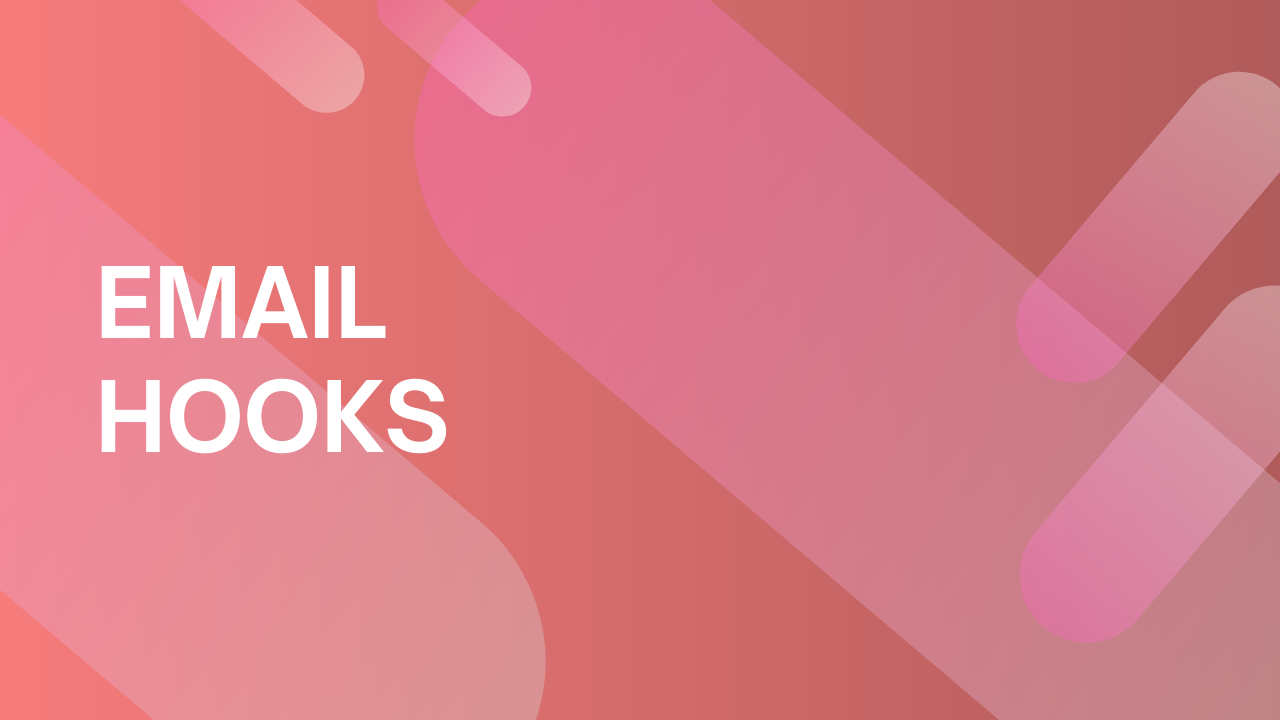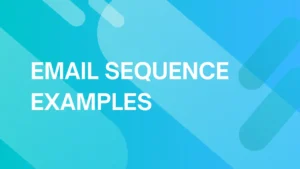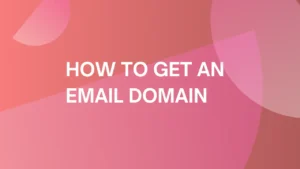
Catch and connect: An intro to great email hooks
Let’s face it — we’re busy people.
Nudges, prompts, alerts and requests are constantly filling our inboxes; the pace of these demands has conditioned us to give most of them a quick glance before filing or deleting them and moving on.
To stand out and announce yourself, your emails need a hook. They must be able to strike hard and sharp into desires, fears or a sense of intrigue.
That’s the only way your customers are going to read on and raise your click-through rates.
But, how do you put a great hook together?
Staying simple and concise can be tougher than you realize. The hook is meant to encapsulate what problems you’re trying to solve, how you might do it or why your business is unique.
There’s very limited room for this.
Technically, the hook constitutes the first text your contact will see: the subject line, email header and introduction. Any or all of these elements can deliver the quick punch of recognition required for higher engagement and deliverability.
Although there isn’t a catch-all method for email hooks, we do want to share a few tips and pointers as you experiment with split tests. They’re bound to boost your chances of being opened and read from top to bottom, instead of being ignored or flagged as spam.
Stir a strong emotion in your email subject lines
Being too literal from the jump can make your emails less tantalizing.
Remember, a subject line isn’t necessarily your main offer or pitch. Sales promos and event reminders are two exceptions in which extremely blunt language (e.g., “Get XXX% off our member packages this weekend,”and, “Just one day till our webinar!”) can grab an audience.
However, if you think about it, these types of messages are already playing an emotional note — urgency.
They’re proclaiming value for a limited time. Subject lines should always make someone excited to click or wonder what they might miss if they don’t.
A good hook has plenty of emotions to target. For example:
- Desire (What does the customer really want?)
- Curiosity (Do you have a surprising answer or piece of information?)
- Anxiety (Is the information critical enough to demand attention now?)
- Relief (Can you solve the customer’s concerns easily and painlessly?)
- Appreciation (Are you busting myths, jargon or misconceptions?)
Treating these themes effectively means you’ll have to hone in on an instant reaction to your subject lines — the feelings a person might have as they read 7-10 words. Hooks are very clear about hitting one key emotion.
Here are several suggestions for writing subject lines like this.
- Ask questions: Your emails will answer them. Questions spur an audience to think of an answer themselves, even if they’ve never considered the subject before.
- Use active verbs: Examples include, “watch,” “try,” “explore,” “learn” and “investigate.” Active language is more direct and encourages reader participation.
- Leave a sentence hanging: Sometimes, you might want to keep an answer out of reach until your contact clicks e.g., “The secret to impeccable HR is …” or “We’ve found it — the last part of your wardrobe!”
- Make emojis rare and relevant: One or (at a push) two might be fine, but emoji overkill makes your messages look like spam. Some of the best email hooks have a single emoji that accentuates your value proposition, such as a
for speed or
for breaking traditional limitations.
- Add a fact or statistic: Numbers themselves can be shocking or fascinating, depending on what you’re revealing. At the very least, they can back up an emotional trigger with hard evidence.
Write emails that speak like your audience
Effective marketing thrives on understanding your audience personas. After all, people have their own interests, preferences and modes of communication — some of which you’ll glean from market research.
A financial analyst in their 50s, for instance, will probably use quite different language in their job compared to, say, a 26-year-old web designer.
You can apply your knowledge of roles, ages, locations, budgets and high-performing content to writing an email hook.
Professionalism is the key variable. Formal, B2B language with few adjectives or hyperbole will appeal to customers who either communicate like this themselves or hold a senior position in their organization.
Conversely, a chattier, more discursive expression has a better chance of reaching anyone in a creative field or working in entry-level or mid-management roles.
There’s a fine balance to strike between a hook that grabs someone’s attention while telling them something useful. It will change with your business and target customers.
Either way, it’s wise to embrace contractions e.g., “it’s,” “they’re,” “couldn’t.” They help sentences flow and mimic speech patterns without diluting a professional message.
Try to keep your hook fairly short, too. Break several points into shorter sentences that can leap out in the first paragraph, or focus on one benefit that can stand on its own.
Additionally, be wary of saying too much or repeatedly reminding your customers what they’re losing if they unsubscribe because it may come across as overtly salesly or as if you’re not listening to them.
Goodbye emails should be handled with care: A quick “Sorry you’re leaving us” might suffice for the hook. Or instead, you can opt for a subject line like “Goodbye for now” (implying they might want to return without actually saying it) and a header such as “Thanks for reading! What did you think of us?” This example invites a conversation.
So, even if the customer doesn’t want to engage with your content for now, they can still voice their opinions and remember your brand positively.
Sharpen your hook with a problem and solution
Improving your email open rates is already challenging. Getting readers to convert — either to sign up, buy or upgrade — is another matter entirely. Mailchimp reveals that decent conversion rates hover somewhere between 2-5%.
If few customers are making a purchase or taking an action that leads them further down the sales funnel, it’s worth assessing whether your email hooks are giving people a reason to care about what you’re saying.
The solution is twofold: You need to outline a problem and explain how you’re going to solve it. The hook must sink into relatable, relevant concerns. Then, it can position your company and solution as the antidote.
So, how do you accomplish this within a handful of sentences?
Distill a problem down into effect and (maybe) cause
Start with demonstrating you understand what the issue is doing to your audience, rather than what it is.
Concision is king.
“Figuring out what to buy for your loved ones is tiring… We’ve all had broken promises before when it comes to nutrition… When you stay with an energy supplier for too long, you’re burning dollars as well as fuel.”
These email hooks cut right to the pain.
A follow-up sentence could provide more context if you think your readers want to learn why that pain is occurring at all.
Mention specific gains
When describing your solution, it pays to explore tangible benefits instead of vague ideas.
Every company believes it’s tailored, flexible, professional and people-focused. What can you really deliver head and shoulders above the competition? It’s a fantastic opportunity to use statistics, projected savings, timeframes, efficiency advantages or whatever else you have on hand.
Furthermore, case studies can supplement your email with content that shows the solution at work. Use them to validate your hook at certain stages in the nurturing journey.
Contrast “before and after”
Opposition attracts.
A good hook can present two realities — one in which the customer sticks with their current service or product, and another where they’re working or living easier and more pleasurably because of you.
Compare and contrast options briefly e.g., “Fast food or rapid health benefits?” for a nutritional meal-plan service, or, “Leave the legwork behind and let automation do the walking” for a robotic process consultant.
You might want to sketch a list with a pair of columns (“before” and “after”) for ideas.
Beware of choices that harm email deliverability
As strong as your hooks might be, there’s still a major danger holding your email marketing back.
This is the spam folder: a dreaded destination.
Numerous factors can decide whether you’re marked as spam or blocked by an email service provider and never delivered at all.
Suspicious or blacklisted content can have the best hooks in the world yet make zero headway with an email list.
Ensure you don’t have any spam triggers in your subject line or body copy. This is important, because email filters will detect them and send you straight to the junk folder if there are enough. Such triggers can be:
- Language repeatedly mentioning money, sales, earnings or currency signs.
- Overly enthusiastic adjectives e.g., “incredible,” “stunning,” “unparalleled.”
- A heavy push for urgency, either asking someone to buy today, act fast or save now.
- Any use of the word “free.”
- Phrases prefixed by “no” e.g., “no cost,” “no obligation,” “no guarantee.”
- Specifically calling out days of the week.
- An abundance of emojis (more than two).
Equally, your domain IP reputation can harm your sender score — a measurement that internet service providers (ISPs) utilize to grade your security transparency and protocols.
We’ve written about ISPs and deliverability improvements before, so you might want to check out our blog on the subject here.
For now, suffice to say, there are a couple domain security details to implement that may keep you on the right side of ISP benchmarks.
We can help with deliverability, too. Warmup Inbox is a unique platform for boosting your sender score and anti-spam status over time.
As 20,000+ real inboxes receive your marketing emails, we’ll remove them from the spam folder, mark them as important and train mail servers to trust what you’re sending.
Then, when you’re sufficiently warm, any email campaign becomes far more assured and successful. How’s that for a hook?
Try Warmup Inbox for seven days, free of charge, and see what we mean.



